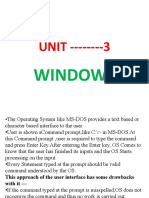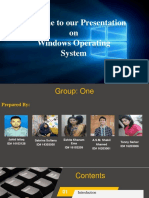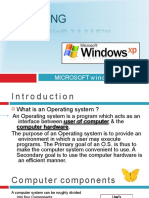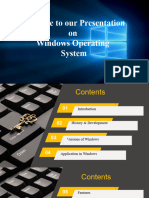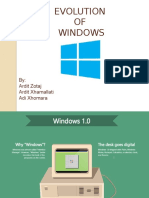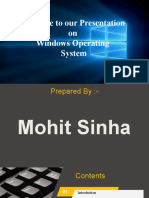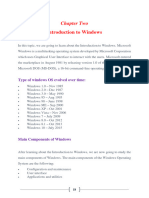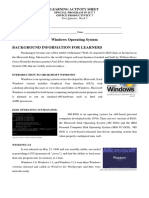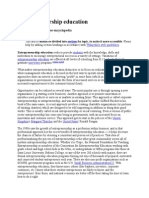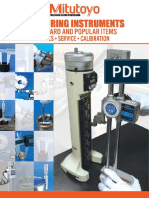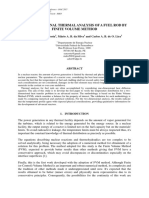0% found this document useful (0 votes)
24 views4 pagesPractical 01
The document provides an overview of the Windows operating system, highlighting its graphical user interface, multitasking capabilities, and extensive software support. It details the history of Windows from its inception in 1985 through various versions, emphasizing key features and architectural components. Additionally, it discusses the advantages and disadvantages of the Windows OS, including its user-friendly nature and security vulnerabilities.
Uploaded by
aaditya0492005Copyright
© © All Rights Reserved
We take content rights seriously. If you suspect this is your content, claim it here.
Available Formats
Download as DOCX, PDF, TXT or read online on Scribd
0% found this document useful (0 votes)
24 views4 pagesPractical 01
The document provides an overview of the Windows operating system, highlighting its graphical user interface, multitasking capabilities, and extensive software support. It details the history of Windows from its inception in 1985 through various versions, emphasizing key features and architectural components. Additionally, it discusses the advantages and disadvantages of the Windows OS, including its user-friendly nature and security vulnerabilities.
Uploaded by
aaditya0492005Copyright
© © All Rights Reserved
We take content rights seriously. If you suspect this is your content, claim it here.
Available Formats
Download as DOCX, PDF, TXT or read online on Scribd
/ 4





